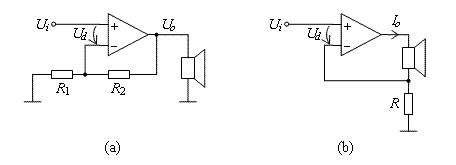Is there a spec that tells you an amp is current drive?
Same or similar power output at different impedances is a good indicator? I feel like I had the answer to this at one point
Is there a spec that tells you an amp is current drive?
Same or similar power output at different impedances is a good indicator? I feel like I had the answer to this at one point
Its not true current drive output (it does have some wierd current amplification internaly but that doesn’t mess with fr). A good quick way to check is to check OI. Current drive will have an effectively “infinite” OI by nature.
I know, but I can’t find the output impedance on that amp anywhere, perhaps I’m just not looking in the right place. That’s a good indicator for the other questyle that they aren’t, but I don’t see any rating on the 800r (because they likely don’t want to advertise a number that high since it doesn’t look good on paper, they advertise it with their other amps though) so that’s what makes me think it might be
Depending on how they measure output impedance, that could be an indicator.
“The CMA800R features an additional voltage-controlled current source and a current amplifier in front of a more traditional Class A output stage”
Cool so it looks like it’s not fully, but it honestly does sound more like one than the rest of their lineup (with the 800s at least). Still can’t find the output impedance though (since I’m now actually curious)
Typically you will find most current drive output impedance are in the hundreds, thousands, or even millions on some select amps. Lowest I’ve seen it go for a current drive amp is 40 ohms, so they are getting lower now, but if it’s really anything below that, it’s likely not
Just as a heads up, by defenition, if am amp has an OI that is lower than the driver inpedence it is not operating in current drive.
AFAIK, the definition is of architectural nature. When the amp has an output shunt that is used for adjusting the output with no regard for the load, it is current drive.
My wording wasn’t ideal, but its two sides of the same coin. Current drive necessitates an OI higher than the load (and visa versa for voltage drive)
It shouldn’t. Because Current is Voltage divided by Resistance, with resistance being known, you could put a voltage-gain stage in the feedback path to adjust for lower output impedance.
Edit: Thinking about this, an “adjust”-circuit as described above would be prone to oscillation. So at power on, before the input signal gets to the output stage, such a circuit would have to lock itself to the “detected” multiplier. Thankfully, that is a solved problem in the electronics world.
You can also have a situation where too low output impedance could destabilize an amplifier, so an internal resistor is used to set a minimum load.
I think we may need this moved to a different thread ![]()
Edit: Thanks M0N
I’ll have to check to see if they list the output impedance in the actual book
I think you may be misunderstanding what exactly a current drive output entails. Here is some good reading on the topic for audio with a circuit breakdown. If you want some more sources I have several for general use trancondictance amplifiers outside of the audio field as well (where they are still uncommon but at least more common than pike “there are 4”)
Stability is a major issue with current driven outputs and according to Soo In (one of the few people to ever bring one to market) a large part of the reason they aren’t more common. (Do note that current feedback is fairly common though, and internal current based amplification before a traditional output stage is used in stuff like CMA, the 13R, and a few firstwatt designs) The CMA 800 uses internal current amplification and even uses current based transmission internaly but is not a current driven output. I have a good explanation of its tech saved somewhere. Let me see if I can find it.
Before going off into “integration hell” and to make sure I am not mixing things up here, these are schematically current drive topologies, right?

The amplifier works to achieve a determined voltage drop across the load.
Implementation A is a voltage follower in the sense that Ui is proportional to Uo. Implementation B is a current follower where Ui causes proportional current Io.
My first dabble into analog circuits was for a project that needed a headphone output. I learned the pitfalls of DC-offset the hard way. So Figure 8 of the link you provided with the DC-Servo brings back some memories.
Concerning output impedance being “the factor”:
Does that 47Kohm spec tell us something?
EDIT: I finaly found the CMA800 tech breakdown. Check out the “CMA800 Work Principle” section
thats input impedance not output
It is written vaguely (or maybe just poorly translated?). The “CMA” tech its self is current based amplification. That is just then rectified into a voltage drive output through a buffer. Here is the general diagram:
The first image is a voltage feedback design and the second is current feedback. Both, essentially, are too simplified of diagrams to tell for sure what they are. The first is a very very standard voltage feedback design so I’m inclined to think its voltage drive. The second appears to be voltage drive as well (due to using a standard opamp symbol for a voltage input and not one of the more common OTA symbols) but it may just be extremely simplified and actualy talking about an OTA. Its just not realy possible to definitively tell.
current drive vs voltage drive operation tell you nothing about current or voltage limitation of a circuit in and of themselves (plenty of voltage drive amps are actualy current limited). All it means is the one modulates current while the other modulates voltage. Thats really it.
It’s probably just best to ask this…what are some examples of current drive amps? I think bakoon is the only one I know of
Bakoon HPA-21/01/01M (13r/23r are not current drive), releaf, a2p TU-07hp
Curent drive speaker amp? Tempted to bug him for more info on this one tbh
It’s current feedback, which isn’t current drive, generally just means the amp has local feedback in the current stage. All Cavalli amps work that way for example.
This discussion reminds me of one from guitar forums when a new person asked what wood a guitar is.

Their 07 line has been current driven thus far (there are 3 pervious products) but all have veen non-global feedback. I did message the creator to confirm though so we will see what he says